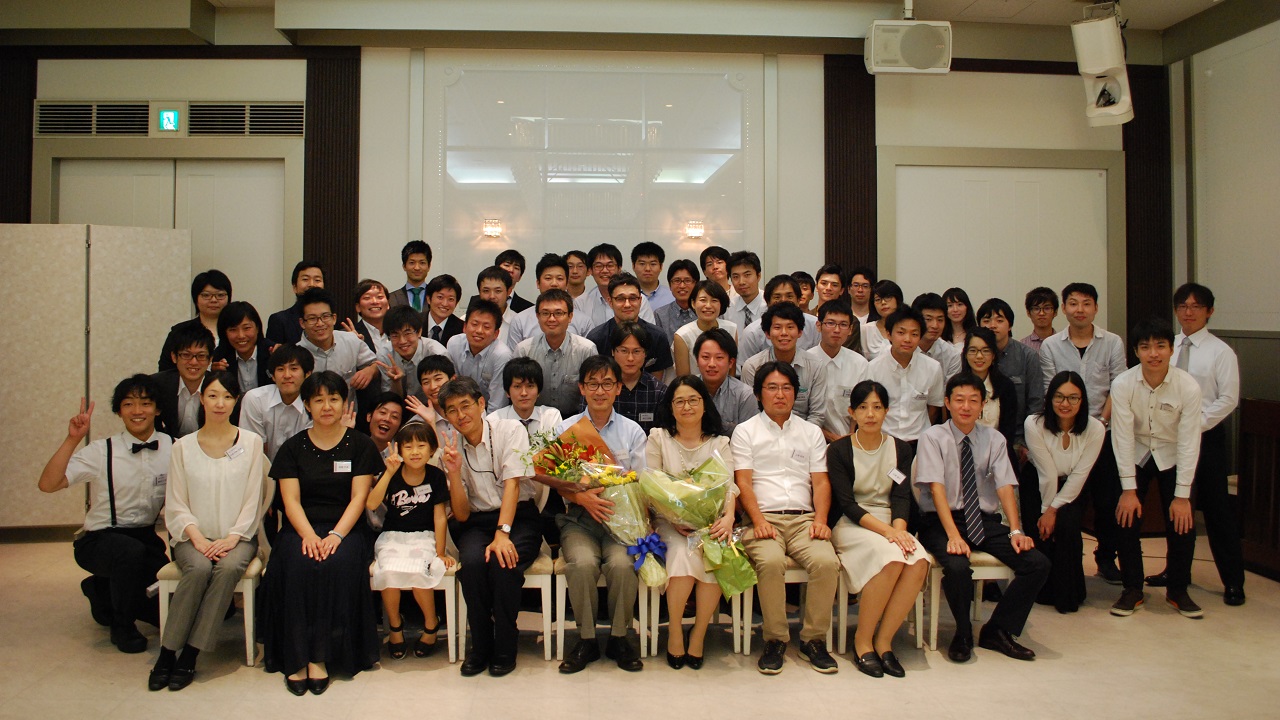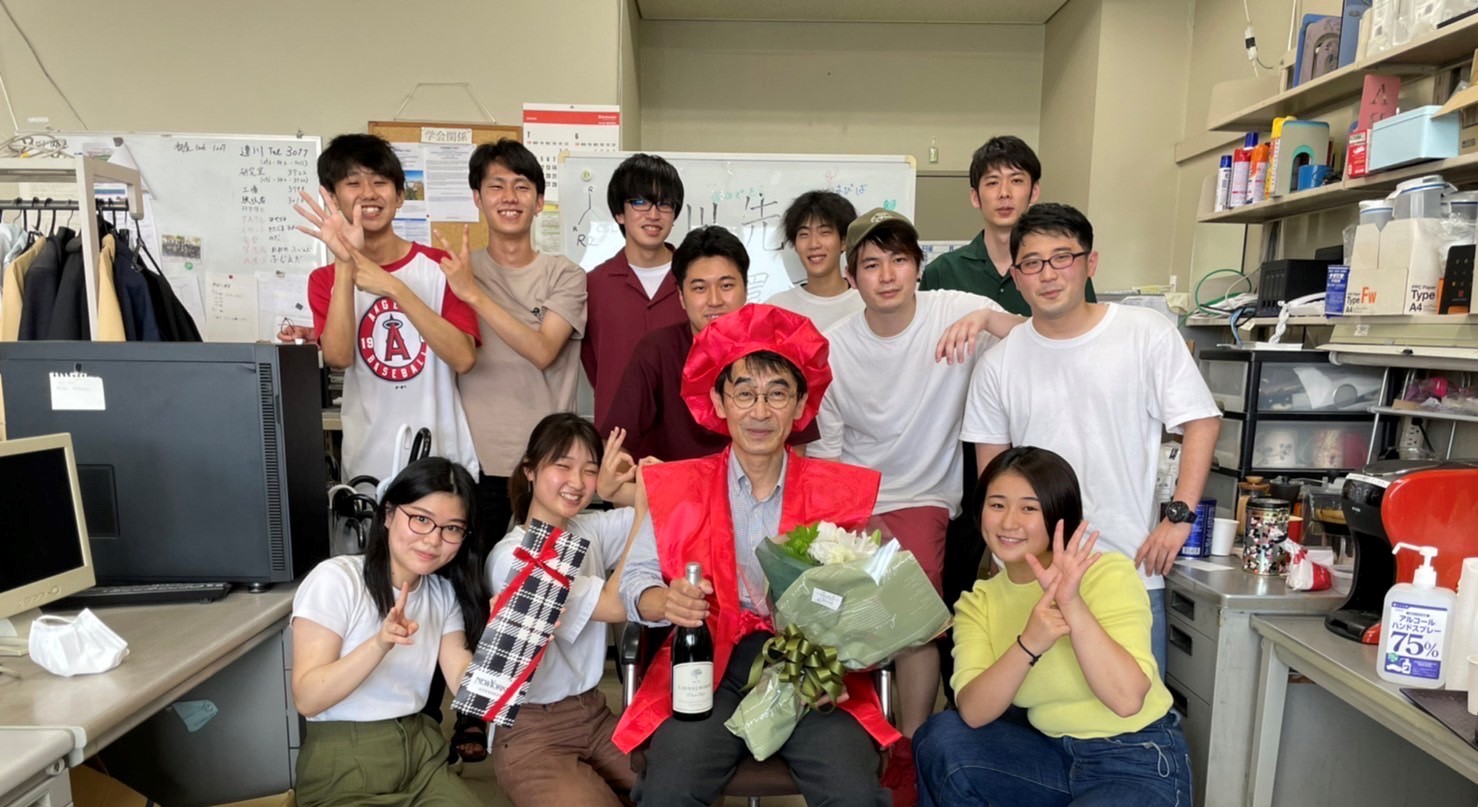About our lab.

Many of the materials around us are polycrystalline materials composed of many crystals or "grains". Grain boundaries are interfaces between two grains of different orientations, and their structures and properties depend on the crystal orientation relationship between the neighbouring grains. The properties of grain boundaries often control the physical properties of the entire polycrystalline material. One example of the importance of grain boundaries is the issue, recently in the news, of cracks in nuclear reactors. In many cases the cause is the the "stress corrosion cracking" phenomenon, which occurs preferentially along grain boundaries. Thus a phenomenon that occurs locally on a nanometre scale governs the performance and reliability of the entire structure. However, an important point is that all types of grain boundaries necessarily have the same effect and there are certain types at which stress corrosion cracking hardly occurs at all.
Similarly, in polycrystalline silicon solar cells, a key technology in the search for greener and cleaner energy, grain boundaries are one of the main causes of losses causing decreases in the conversion efficiency of sunlight to electrical energy, but it has been shown that not all grain boundaries contribute to this loss to the same extent. These two examples show that it is important to make the best use of the individual characteristics of grain boundaries to design and control materials properties. The research in our group takes as its basis grain boundary and interface science and engineering and the PMP triangle of 'Microstructure-Properties-Processing', with the aim of developing advanced materials with excellent function and performance.
Topics
-
業績の更新
Sadahiro Tsurekawa, Misaki Teraura, Takateru Yamamuro and Dmitri A. Molodov
Anomalous grain growth in S-doped Ni and comparative insights from the Al-Sn alloy exhibiting grain boundary wetting transition -
業績の更新
中嶋優希さん(博士前期課程1年)が2025年5月31日に行われた日本金属学会九州支部・日本鉄鋼協会九州支部・軽金属学会九州支部・合同学術講演会で口頭発表優秀賞を受賞しました。
-
業績の更新
Dmitri A. Molodov, Jann‑Erik Brandenburg, Luis A. Barrales‑Mora, and Sadahiro Tsurekawa
On the effect of inclination dependence of grain boundary energy on grain boundary migration in Al bicrystals -
業績の更新
志賀春日さん(学部4年)が2025年3月25日に熊本大学工学部長表彰を受けました。
中嶋優希さん(学部4年)と丸目大智君(学部4年)が2025年3月25日に物質材料工学教育プログラム奨学賞を受賞しました。 -
業績の更新
Chikako TAKUSHIMA, Jun-ichi HAMADA, Sadahiro TSUREKAWA
Rapid Achievement of High Frequency of CSL Boundaries in Austenitic Stainless Steel via Reduced Stacking Fault Energy -
-
-
業績の更新
Shinya TAKETOMI, Toshiki TANIGUCHI, Hiroki YAMAMOTO, Seiya HAGIHARA, Sadahiro TSUREKAWA, Ryosuke MATSUMOTO
Effect of Hydrogen Concentration on Nanoindentation Softening and Hardening in Iron: Ferrite Phase of S25C and Single-crystal Fe-3wt.%Si -
業績の更新
Yasuhiro MORIZONO, Takateru YAMAMURO, Sadahiro TSUREKAWA
Carburization Ability of Novel Solid Carburizing Method Using a Mixture of Iron, Graphite and Alumina Powders -
業績の更新
市村嘉健君(博士前期課程1年)が2024年6月1日に行われた日本金属学会九州支部・日本鉄鋼協会九州支部・軽金属学会九州支部・合同学術講演会で口頭発表優秀賞を受賞しました。





